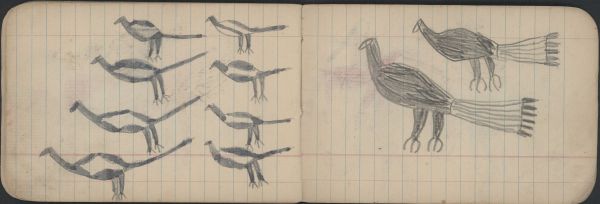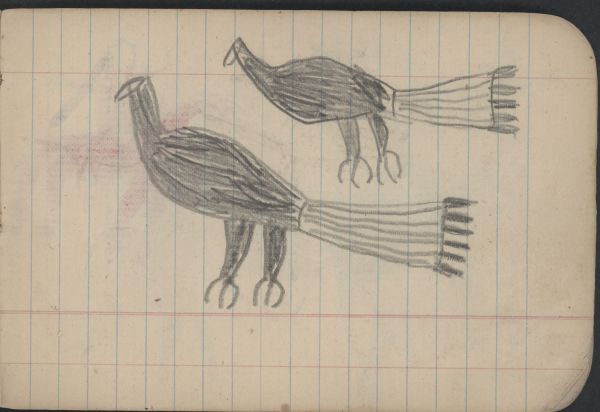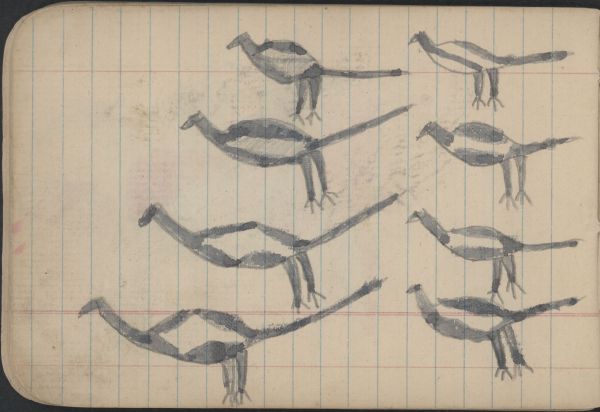BIRDS: Golden Eagles; BIRDS: Magpies
Ethnographic Notes
Right: Like Plate 15, these two birds have the distinctive talons and tailfeathers of golden eagles. They resemble the “striped eagle” in Making Medicine's 1875 "Fowls of Indian Territory" drawing (National Anthropological Archives, Smithsonian, Washington D.C., Neg. No. 55,036, dated 1875). John H. Moore describes the “war eagles” in “The Ornithology of Cheyenne Religionists” (Plains Anthropologist 1986: 177-92). In recent years I have seen Golden Eagles wintering in western Kansas, due to population rebound after ban of DDT pesticide. Unlike Bald Eagles, they do not normally eat fish, but rather small prairie animals. In this drawing, the birds stand erect with large legs, and three talons. They have long feather tails with parallel tips protruding, indicate tail feathers. Media: The Eagles are lead pencil outlines filled with pencil. Left: These eight birds are probably magpies. They are identical; however the first four on the right-hand side of the page (as the viewer sees it) are smaller than the next row of four. They have lozenge-shaped white markings in the centers of the bodies. Magpies also have distinctive white markings and sharp tails like these birds. This could represent the white markings on juvenile turkeys. Making Medicine has examples of both turkeys and magpies in his drawing “Fowls of Indian Territory” (Berlo 1360). His magpie has a sharp tail and white markings on the wings. No other birds in this or related 1879 Dodge City ledgers are like these. Moore reports Magpies and Eagles are both "maheonevekseo" or "holy" birds in Cheyenne taxonomy (1986: 182). Media: Lead pencil outlining and detailing; black ink fill.


